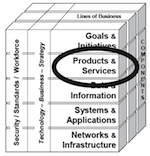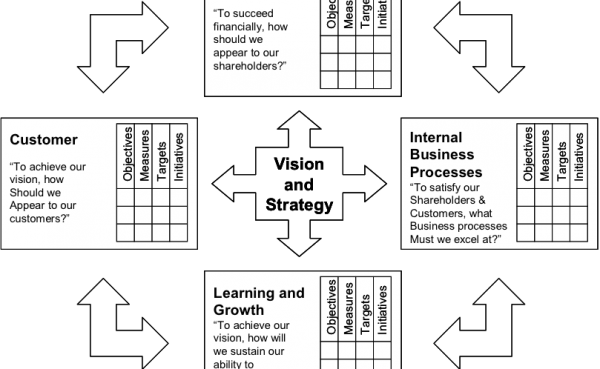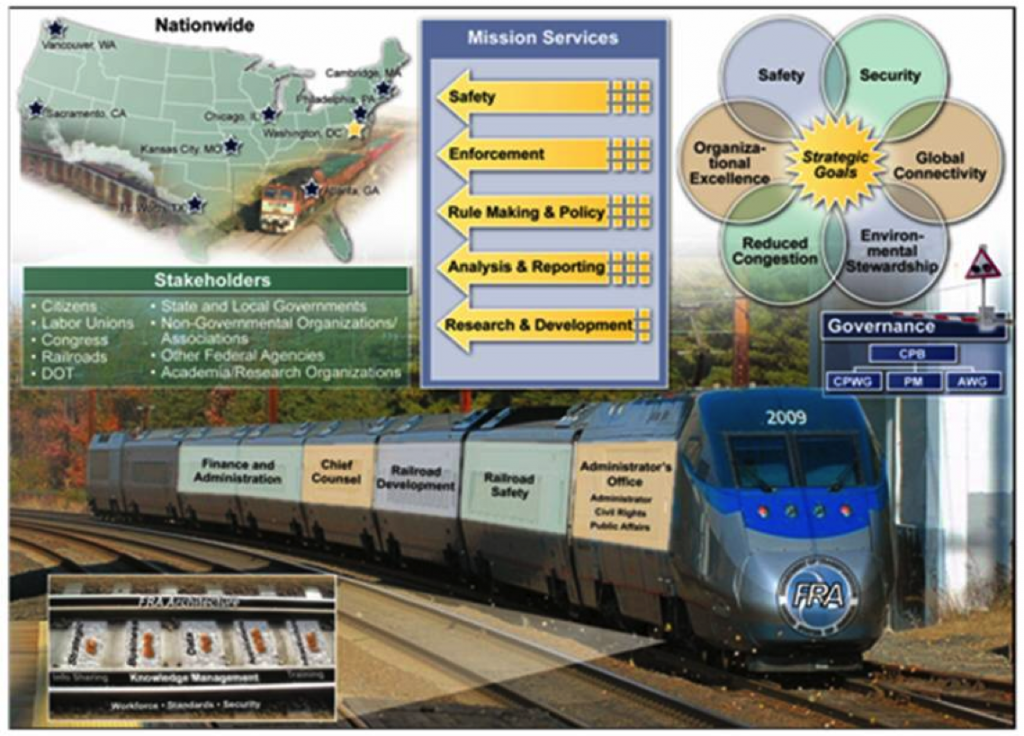The Business Process area spans one of the most diverse modeling fields in practice. Many tool vendors use proprietary modeling methods and notations, and the international standards in the field are weak.
- IDEF0 Business Process Diagram
- BPMN Business Process Diagram
- Swim Lane Process Diagram
IDEF0 Business Process Diagram
A Business Process Diagram shows a detailed breakdown of an activity, including how each step in the activity relates to the others.
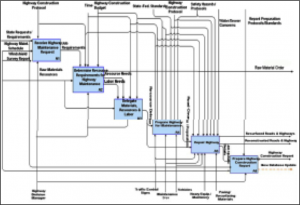
The diagram follows the IDEF-0 modeling technique to show what the inputs, controls, outputs, and mechanisms are for each step in the process. This method for modeling business processes is known as the Integration Definition for Function (IDEF) technique. Developed in the mid-1970’s for modeling complex military projects,
IDEF-0 activity modeling is suitable for business process documentation in that it provides both high level context views, and more detailed views of each step in the activity in a format that can be further decomposed and interrelated with other processes to show linkages. This type of diagram is useful in showing linkages between steps and internal/external influences, but may not indicate a time sequence.
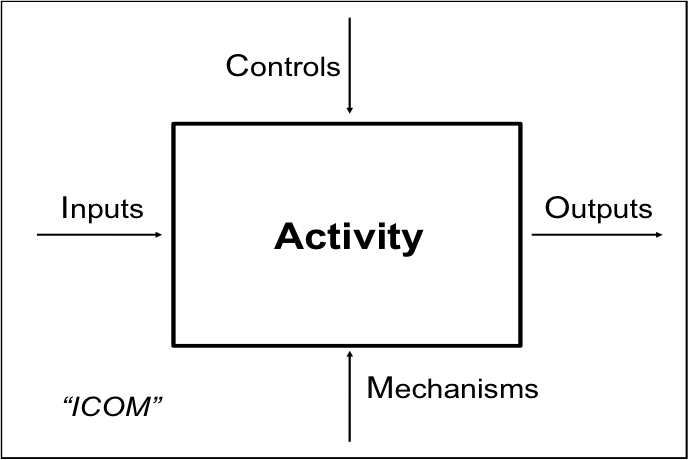
IDEF-0 uses Inputs, Outputs, Controls and Mechanisms (ICOM) to show the parts of an activity within an enterprise.:
- Inputs: Items that initiate/trigger the activity and are transformed, consumed, or become part.
- Controls: Guide or regulate the activity; usually indicate when/ how a process will be performed.
- Outputs: The results produced by the activity; the reason for which the process was performed.
- Mechanisms: Systems, people, and equipment used to perform the activity.
BPMN Business Process Diagram
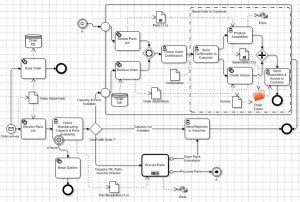
Business Process Model and Notation (BPMN) is a graphical representation for specifying business processes in a business process model. It was previously known as Business Process Modeling Notation. Business Process Management Initiative (BPMI) developed BPMN, which has been maintained by the Object Management Group (OMG) since the two organizations merged in 2005. As of March 2011, the current version of BPMN is 2.0.
The Danish government earlier strongly promoted BPMN and made BPMN 1.1 an officially recommended standard in 2009. The Danish Local Government Association (KL) invested heavily in process diagraming work and sharing via Arbejdsgangsbanken, but decided to close / freeze it last Winter.
Recommendation: Use “BPMN Light”.
Swim Lane Process Diagram
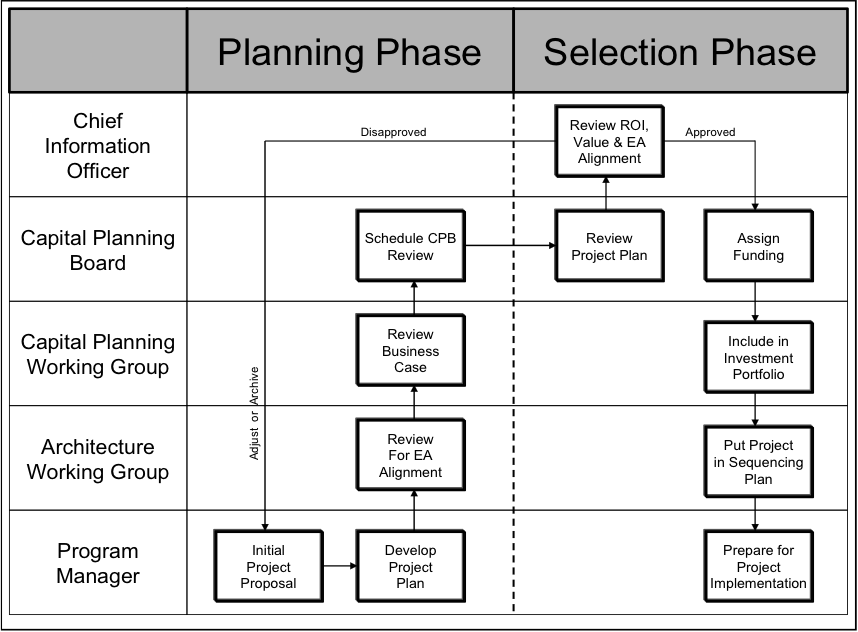
A Stakeholder Activity Diagram shows which stakeholders (those with a vested interest in the enterprise) are involved with line of business processes, and the timing of that interaction. The diagram uses the format of ‘swim lanes’ to arrange stakeholders by row, and timeframes by column, then overlaying activities with flowchart symbology.
